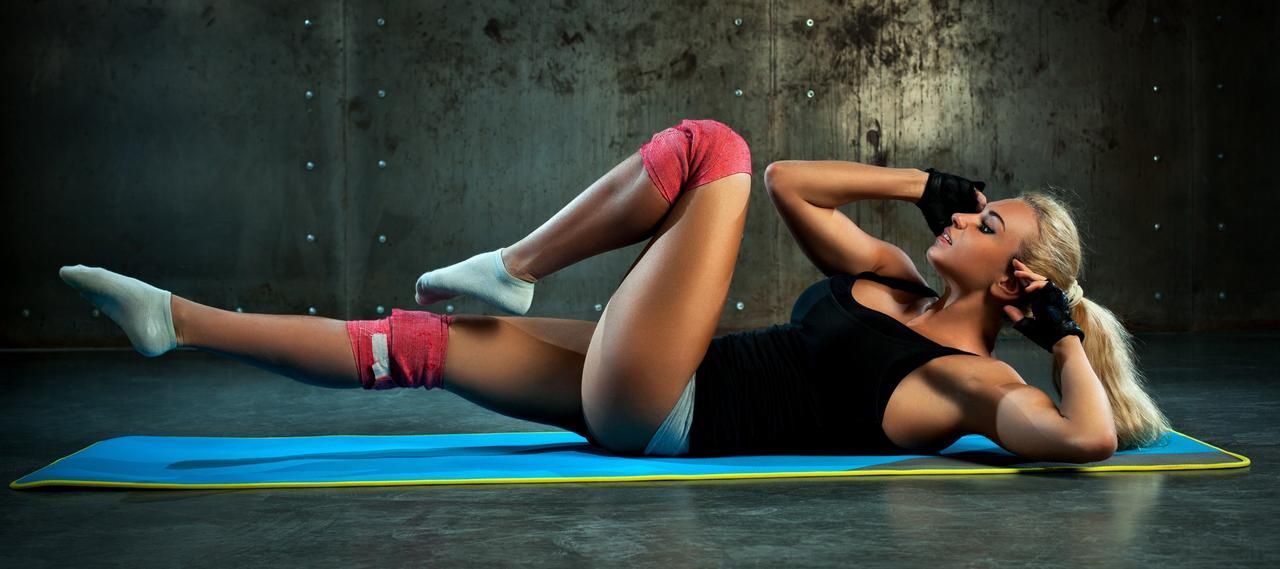Как стать хорошим физическим здоровьем
I haven’t been in a gym for a while now since I’m mostly focused on my tango progress and I have enough equipment at home to do a solid strength and endurance workout three times per week. However, I still think a lot about various forms of gym workouts and get a lot of questions from my friends.
One of the most common myths that I like to bust and that has annoyed me whenever I would spot it in a gym is: girls should do specific workouts with featherlike weights and extremely high number of repetitions in order to become nicely shaped without getting too bulky. Gosh, I’m annoyed again

You cannot change your shape without increasing/decreasing the size of muscles in your body and/or increasing/decreasing the amount of fat in your body. Period. There is no such thing as “lifting” your butt or "tightening" your stomach without increasing the size of your gluteus or abdominal muscles and/or decreasing the amount of your fat.
If you are afraid that by using “heavy” weights you will quickly become bulky – no, you won’t. It takes many years of regular training to become bulky, otherwise, the gyms would be empty and Schwarzeneggers would be all around us. In addition, if you are a female, you have a significantly lower starting muscle strength. Thus, you can go to a gym for months and even a couple years and it will only improve your looks, there is no way that you can become overly muscled in a short time.

OK, since I have released my frustration a bit, let me present you with some scientific facts and realistic ways in which female workout programs should differ from male ones.
Women naturally have a lower percentage of muscle mass and a higher percentage of fat than men. Thus, it is normal for women to start working out with proportionally lower weights. Lower weights mean just that - lower weights, not completely different types of exercises.
Furthermore, the muscle mass is distributed a bit differently – while women have about 40-60% weaker upper bodies, their lower body muscle mass is only 25-30% smaller. When you couple this with the fact that the lower body is usually regarded as more important for the looks of ladies, while the upper body is more important for the attractiveness of guys, it is easy to conclude that one of the most important gender-based differences in workouts should be somewhat higher focus on the upper or lower body.

Thenext important difference is the predominant type of muscle fibers. There are two muscle fibers in our bodies. Type I muscle fibers are referred to as "slow-twitch", while type II are called "fast-twitch" fibers. Studies have found that women have a higher percentage of slow-twitch muscle fibers than man, making them more resistant to fatigue but less powerful/explosive in short bursts of intensive effort. This is further boosted by certain hormonal and fat-usage-related differences, which also make girls capable of training for longer and recovering more quickly.
Considering the muscle fiber differences, girls could benefit from training their type I fibers a bit more, which can be done by performing a couple more repetitions per set. However, many reliable sources (including sport and medicine universities and organizations) claim that, for the same goals, men and women should aim for the same number of repetitions per set.
To conclude, if a lady wants to improve the shape of her body, I believe that she should not follow a drastically different workout routine than men. She should just start with proportionally lower weights, include a bit more exercises for her lower body, and increase the number or repetitions from 8-12 recommended for men to about 13-17. Please note that, as there is no general scientific consensus on the difference in the number of repetitions, this is just my recommendation, based on a moderate/intermediate approach.
Please let me know:
What do you think about the gender-based differences in workout programs?
Do you have any important scientific facts or studies that I’ve missed to include?
If you liked this post, feel free to also check out my recent article: